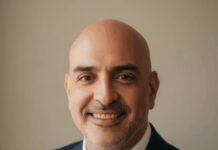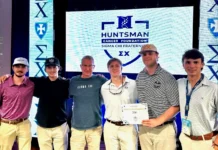Historically Black Colleges and Universities (HBCUs) have long been celebrated as places where Black culture is honored, and their student bodies reflect the diversity of the Black experience, with the first being The African Institute, established in 1837 — almost 40 years after John Chavis became the first African American on record to attend college. These institutions produced some of the greatest minds in science, philosophy, civil rights and leadership, with many emerging during the late 19th century, immediately following the Emancipation Proclamation. As they navigated the complexities of racial identity, Black students and professors at these institutions sought to create spaces for people who shared similar values, one of the earliest being Beta Kappa Sigma (the Black Cats) founded in 1890 at Wilberforce University, a private HBCU in Ohio.
Black Greek life, rooted in educating Black Americans about their culture, ancestry and civil rights, maintains discretion due to efforts to preserve tradition and the lack of media representation. The Technique spoke with two seasoned members of National Pan-Hellenic Council (NPHC) organizations: Joseph Lumpkin (Phi Beta Sigma Fraternity Inc., University of Georgia, 1994) and Devine Wright (Alpha Kappa Alpha Sorority Inc., University of South Carolina, 1999), to explore the rich histories, connections to various civil rights movements, and enduring bonds of brotherhood and sisterhood. Their stories offer deeper insight into the significance of Black Greek life, often overlooked in mainstream narratives.
When discussing the origins of these intercollegiate organizations, Lumpkin highlighted how early membership often reflected internal divisions within the Black community, shaped by white-imposed standards of beauty and worth. Practices like the “paper bag test” and judgments based on social class — criteria rooted in harmful stereotypes favoring lighter skin and looser curl patterns — shaped who was deemed suitable for membership and reinforced certain perceptions of these organizations.
“You’re talking about the first generation of Black people to go to college. You have the NAACP, the Urban League, the UNIA, the Rastafarians, … and everybody’s trying to figure out what it means to be a Black American because that hasn’t been established yet. [The early founders of NPHC organizations] were basing it on skin tone, they were basing it on hair texture, they were basing it on where you were from [and] what kind of job your parents had,” said Lumpkin.
While these organizations serve as beacons of hope for civil rights and exemplars of Black excellence, their origins were rooted in a context that inadvertently reflected Black eugenics. In the early 1900s, when many of these organizations were founded, Black elites were predominantly fairer-skinned individuals, reflecting broader societal dynamics. This pattern echoed W.E.B. Du Bois’s concept of the “Talented Tenth,” which emphasized only a select, educated group of black people (often lighter-skinned) could contribute to the advancement of the race.
Mainstream media often overlooks these organizations and their membership, reducing Greek life to a Eurocentric, party-driven social scene focused on alcohol, with public attention primarily arising from hazing incidents. However, these organizations have deep ties to the civil rights movements with prominent members of African American history being members of NPHC themselves such as Thurgood Marshall and Dr. Martin Luther King Jr ( Alpha Phi Alpha Fraternity Inc.), Langston Hughes (Omega Psi Phi Fraternity Inc.), and Shirley Chisholm (first black women to be elected to Congress and run for president, member of Delta Sigma Theta Sorority Inc. ). Additionally, several political leaders, including former President Bill Clinton — an honorary member of Phi Beta Sigma Fraternity Inc. — have been part of these organizations, underscoring the far-reaching influence and significance of NPHC membership. In fact, A. Phillip Randolph — “The Father of the Civil Rights movement” who worked closely with Dr. King — was a member of Phi Beta Sigma Fraternity Inc. and planned many marches on Washington, plenty of which were planned at the fraternity’s headquarters in Washington, D.C.




















